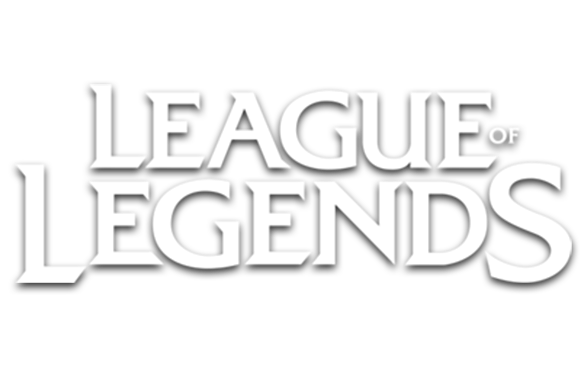Imagine creating a vast digital world with vividly colored landscapes, complex characters, and intricate interactive elements. Step into the realm of video game development. Have you ever asked yourself: how are games made? Gaming has been around since William Higinbotham created Tennis for Two in 1958. They’ve come a long way since then, to say the very least. The pace of technological advancement is exponential. Take virtual reality (VR) gaming, for example. Not more than a decade ago, VR games were still science-fiction for most. Today, nearly 200 million people own headsets, which is expected to grow as they get cheaper each year.
So what exactly does it take to make a video game? First, the amount of work required to create a game varies immensely. For this article, we’ll be discussing the build process behind studio-made games. As you can imagine, crafting these virtual creations is no easy feat. Building a video game consumes thousands of hours, requires experts from many fields, and abundant computing power. From concept to publishing, learn how a studio or indie developer navigates the complexities of how video games are made.


The Video Game Development Process: How Are Games Made?
First of all, creating a video game is no small feat. It requires a lot of planning, designing, and hard work. But, whether you’re an indie game developer or part of a huge team working at a triple-A studio, the process follows three simple steps: pre-production, production, and post-production. Let’s look at each stage more in-depth.
Pre-Production Phase: Making a Video Game Make Sense
The pre-production stage of the developmental cycle is critical to defining the aspects of a game. During this process, creators must determine and define the elements that go into their project. From outlining objectives and storyboarding to developmental tasks such as mapping out timelines or figuring out a budget, pre-production is the stage during which game ideas transform from dreams into achievable plans.
All games begin with an idea. This can come from a story wanting to be told, an exciting game mechanic, or new technology like VR or AR. This is called the concept. The concept will be hashed out in a detailed (and incredibly long) game design document in professional studios. Essentially, this document details the game’s vision and serves as the guidelines team members will follow. Nonetheless, the game design document isn’t set in stone. It is almost guaranteed during the game’s development that changes will need to be made- a game mechanic isn’t functioning, or the hardware or software isn’t working, amongst other issues. Due to the likelihood of change, well-known video game designer Mark Cenry proposed a new planning method. The “macro game design” is a one to two-page document with high-level descriptions that can be expanded upon. Whether the detailed game design document is chosen or the high-level macro method is, the plan should always include the following:
- Game Concept
- Core Game Mechanics
- Gameplay Features
- Gameplay Breakdown
- Project Scope Breakdown
Production Phase: How Video Games are Made
Production of a game is the longest stage and is where video game content production occurs. It includes the content, assets, and co-creation. A production phase is a balancing act between creativity and time management. It’s an exciting time when artists, developers, and programmers work to implement content and complete various tasks for the game’s development. In any creative industry, staying on time while being creative and having fun is challenging. There are five categories in the pre-production phase which we will dive into.


Vertical Slice: A Glimpse into the Game
How big will your event be? This should be the first consideration. Small events, like private parties, workshops, or small corporate meetings, demand a more intimate setting and only require a small dome. Medium-sized events, including product launches, art exhibitions, or corporate seminars, need a bit more breathing room that will provide ample space without leaving guests walking long distances. Larger-scale events, like concerts, festivals, or trade shows require the biggest domes that can house stages, seating areas, and separate sections.Pre-alpha: Bringing the Game to Life
The pre-alpha stage is where the majority of the content for the game is designed. This stage is incredibly exciting; artists create art and characters, animators bring them to life through movement, designers lay out the map and levels, and programmers bring it all together through coding and scripting. Many of the most vital gameplay elements are worked on, and not-so-important elements are cut. Why are certain elements cut from games? Some concepts may not translate well in-game, or some elements may not add much value. It’s essential to cut out the less important elements to ensure no time or resources are wasted.Alpha: Squashing Bugs
In the alpha stage, the game is playable from start to finish. There may still be missing components and art assets; however, these will be finished and polished in this stage. Extensive testing is conducted as the release date approaches. If any feature needs to be dropped before the final push, it is done in alpha. Testers will meticulously go through each game mechanic and function to test and record “bugs,” another term for glitches or flaws.Beta: Testing, more testing, and fixing!
Testing, testing, and fixing! The beta stage is focused on fixing bugs, eliminating as many as possible before launch. The bugs are usually ranked by priority from high to low so that at least by launch, the game-breaking ones are addressed rather than focusing on the ones that are difficult to reproduce. At this point, the game is considered complete.
Gold: It’s Showtime
It’s time to celebrate because all the hard work has paid off! The finished game is then sent to be played by the publishing outlet. In the past, the project would end here; however, it’s commonplace nowadays for the game development process to continue. Bonus content, patch fixes, and DLCs are all reasons to continue working on the game. And alas- once the gold stage is reached, you officially launch the game!Post-production: It's Not Game Over Yet
You might think that once the game is launched at the gold stage, it’s “game over,” but that’s not true for most modern games. Post-production of a video game includes adding features or necessary updates to increase retention and customer satisfaction. Despite vigorous testing in the production phase, not all bugs will be identified. Instead of tens of people testing the game, now thousands, even hundreds of thousands of people are. Bugs that were hard to replicate now have multiple instances, or new ones are found. For example, take the controversial Cyberpunk 2077. The game’s 2020 release stirred up quite the discussion online when players encountered countless errors, notable missing features, and bugs during gameplay. Developers began releasing patch updates for the game to fix the issues all the way up to 2022.


Downloadable Content (DLCs): Expanding the Game’s Lifespan
Modern technology has also allowed developers to create additional downloadable content for video games after release. To keep the game exciting and remain relevant to players, additional content, levels, items, and modes and additional content can be added. The popular and loved game, The Witcher 3, added two expansion packs that deepened the player’s connection to the story. The Blood and Wine expansion pack brought players to a new location, more characters to interact with, and more monsters. DLCs keep things exciting, fresh, and challenging for players, ultimately expanding the game’s lifespan.
Crafting a video game requires tremendous amounts of skill, dedication, and planning. From the ideation and pre-production phases to the development and post-production phases, there is much to consider surrounding how video games are made. It’s no wonder it takes so long for new games to hit the market – it’s an ambitious process that requires masterful coordination and creativity.



































